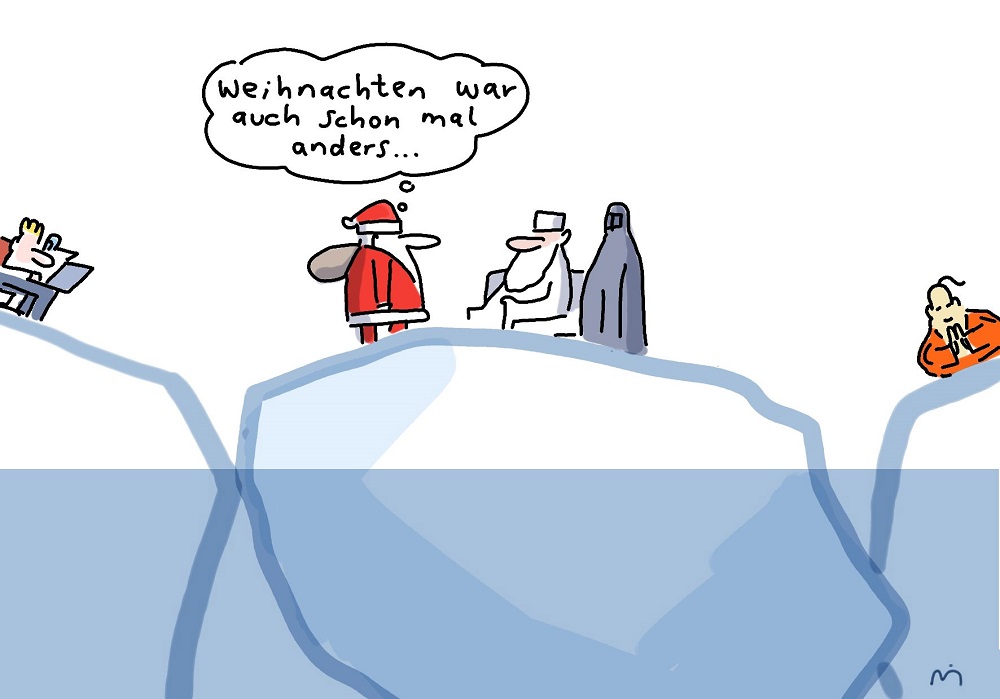„Take Your Brand Abroad“ – The Significance of Intercultural Diversity
“There are three categories of people in industry: the few who make things happen, the many who watch things happen, and the overwhelming majority who have no idea what happened.” O. A. Battista
Business is becoming increasingly global as more and more companies “Take Their Brands Abroad” and sell to people from multicultural backgrounds. Employees who support customers in or from other cultures need a high level of cultural awareness, understanding and adaptability skills to be effective. Sales people that want to take advantage of this new customer base need to understand the different cultural expectations, needs and shopping habits of their international customers. This is especially true in the luxury industry where many new customers come from developing and fast growing countries like China and India.
Sales people interface with diverse customers on a regular basis in terms of values, religion, sex, race, culture and a variety of other areas. Their responsibilities require the establishment of quality relationships with people who are often very different than themselves.
COMMUNICATION COMMUNICATION COMMUNICATION
Sales people and indeed all customer-facing employees need a high level of intercultural awareness as well as the ability to adapt to their international customers’ needs and expectations in order to be successful. In this way, they are able to ensure they provide the best customer service to customers of any nationality. Herein lies the key to a sales team’s competitive edge that will enable them to take advantage of an ever-increasing international customer base.
Understanding cross-cultural communication styles, either verbal or non-verbal is also crucial when selling across cultures. Using the right tone, adapting to the customer’s level of English or answering complaints in an appropriate way is as important as interpreting the meaning of a silence or a smile which can have completely different meanings from one culture to another.
DISCOVERING INTERCULTURAL NICHES
An example from the Arab World during Ramadan clearly illustrates this: most Westerners think that business is a no-go during this period, with most Arabs sleeping lots and eating little. A false and profit-reducing assumption! In fact, the Holy Month is a peak season for sweet shops, with sales increasing up to 30%. Some telecommunication companies have also adapted their products for the Muslim market by adding special features such as Islamic chants, videos and ring tones relating to Ramadan.
Another successful initiative was started by Samsung who has agreed to give part of its profits to a humanitarian organisation every time certain products are purchased during Ramadan. “The Holy Month” is the perfect opportunity to demonstrate the company’s commitment to corporate social responsibility and ongoing dedication to helping those in need, said the Head of Corporate Marketing at Samsung.
In intercultural training sessions, I prepare employees and their families that are going abroad on international assignments, for their new environments and show them how to avoid behavioural faux pas that easily lead to misunderstanding. Such misunderstandings could potentially cost companies huge sums of money in loss of business, or simply “not getting the deal”. A famous example of this is a top executive who on a trip to China to close a critical deal, handed the CEO of the Chinese company a watch – a well-meaning gesture that would have no “compliance implications” as it would in European business, but one that has critical implications in China – a watch is deemed as bad luck when given as present and suggests that the recipient’s time is ticking away – that he could soon die. This is just one example of how lack of sensitivity to other cultures can have far-reaching consequences in both private and business situations.
Culturally Heterogeneous Teams
It can be tough enough just WORKING in a multi-cultural team, let alone LEADING one! Things can start becoming complex at a very basic level in business, for example deciding on and sticking to the starting time of a regular meeting. A nine thirty start would probably find German team members arriving at 09:15, the Brits arriving at 09:30 and the Portuguese arriving somewhere between 10:00 and 10:15. The question quite frankly is whether it is truly possible to find a workable solution that all team players can buy into. This is not just an issue for multi-cultural teams, but for teams per se. Working in culturally homogeneous teams always requires rules in order to work as efficiently and effectively as possible. This is no different for culturally heterogeneous teams. An additional requirement for such teams is an awareness of and sensitivity for cultural differences, habits and thought processes. This awareness can be learned. When setting rules for intercultural collaboration, decision makers and teams makers need to be aware that for some cultures, getting up for early meetings is challenging and not called for in their home markets – that doesn’t mean of course that one culture is compromised at the expense of the other – rules just have to be made and explained with the relevant “corporate culture” as the deciding factor – and these rules are then seen as a means to an end and not as a blatant disrespect for the culture that needs to adapt. When all team members have this awareness and understand its implications, teams start to flourish. And that is when processes don’t become slower, but more efficient and more innovative.
Of the three categories of people that Battista talks about in my starting quote, make sure you don’t join the majority who has no idea what happened. Instead, position yourself and your organization as one of the few that make things happen, and in doing so, lead your organization successfully past your strongest competitors.
—————————–
Über Marinda Seisenberger:
Marinda Seisenberger ist  Speaker, Trainer und Coach und gilt als führende Expertin zum Thema „Diversity“. Der rote Faden „Vielfalt“ zieht sich auch durch ihren Karriereweg. In ihrer Heimat Südafrika leitete sie drei Institute für Erwachsenenbildung und führte die Abteilung Corporate Communications eines global tätigen afrikanischen Entwicklungskonzerns. 1999 wurde sie Partner einer Sprachschule in Deutschland. Unter dem Slogan „Take Your Brand Abroad“ unterstützt sie heute als Speaker, Trainer und Business Coach zahlreiche Geschäftskunden, darunter auch DAX-Unternehmen, im Ausland erfolgreich zu arbeiten. Sie ist überzeugt: Vielfalt ist ein strategischer Erfolgsfaktor und Innovationstreiber für Unternehmen. In ihren praxisbezogenen Trainings bringt Marinda Seisenberger Mitarbeitern die Bedeutung interkultureller Unterschiedlichkeiten und Vielfalt nahe und zeigt, wie unbewusste geschäftsschädigende Verhaltensweisen im Ausland erfolgreich zu vermeiden sind. Ihre mitreißenden Keynotes zu den Themen „Vielfalt im Flow“ überzeugen durch ihr Know-How und ihre Leidenschaft zu ihrem Thema. Marinda Seisenberger ist GSA Certified Professional Speaker und Mitglied der German Speakers Association (GSA). Mehr Informationen auf http://www.marinda-seisenberger.de.
Speaker, Trainer und Coach und gilt als führende Expertin zum Thema „Diversity“. Der rote Faden „Vielfalt“ zieht sich auch durch ihren Karriereweg. In ihrer Heimat Südafrika leitete sie drei Institute für Erwachsenenbildung und führte die Abteilung Corporate Communications eines global tätigen afrikanischen Entwicklungskonzerns. 1999 wurde sie Partner einer Sprachschule in Deutschland. Unter dem Slogan „Take Your Brand Abroad“ unterstützt sie heute als Speaker, Trainer und Business Coach zahlreiche Geschäftskunden, darunter auch DAX-Unternehmen, im Ausland erfolgreich zu arbeiten. Sie ist überzeugt: Vielfalt ist ein strategischer Erfolgsfaktor und Innovationstreiber für Unternehmen. In ihren praxisbezogenen Trainings bringt Marinda Seisenberger Mitarbeitern die Bedeutung interkultureller Unterschiedlichkeiten und Vielfalt nahe und zeigt, wie unbewusste geschäftsschädigende Verhaltensweisen im Ausland erfolgreich zu vermeiden sind. Ihre mitreißenden Keynotes zu den Themen „Vielfalt im Flow“ überzeugen durch ihr Know-How und ihre Leidenschaft zu ihrem Thema. Marinda Seisenberger ist GSA Certified Professional Speaker und Mitglied der German Speakers Association (GSA). Mehr Informationen auf http://www.marinda-seisenberger.de.






